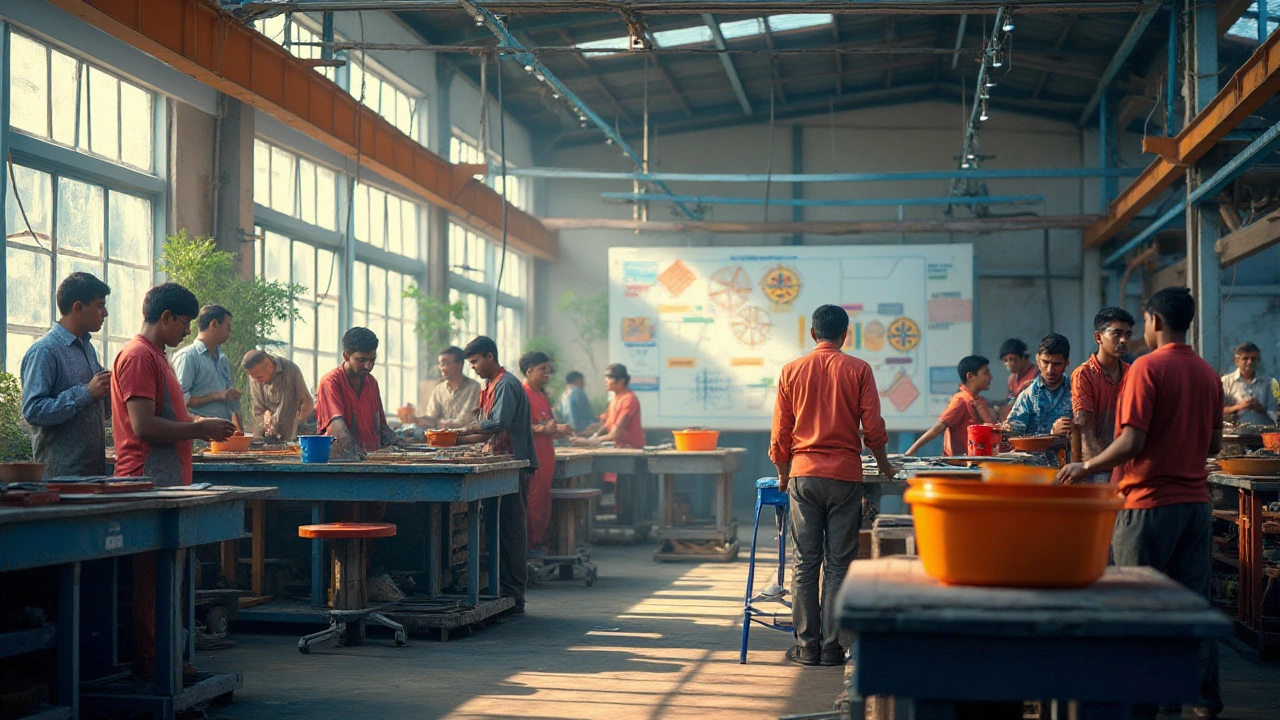Manufacturing Waste: How to Cut It Down and Reuse It
Every factory throws away something – scrap metal, leftover chemicals, or packaging. That waste costs money and hurts the environment. The good news? Simple changes can shrink the waste pile, save cash, and make your operation more future‑proof.
Why Waste Matters in Manufacturing
When waste builds up, you pay for collection, treatment, and disposal. In India, strict rules are tightening, and ignoring them can lead to fines or shutdowns. More importantly, waste signals inefficiency: if you’re tossing material, you’re probably over‑ordering or using outdated processes.
For example, a small metal‑fabrication shop that recycled just 30% of its off‑cuts saved about 15% on raw‑material costs within a year. The same principle works for plastics, paper, and even water.
Practical Steps to Reduce Waste
1. Map Your Waste Stream. Walk the shop floor and note every type of waste produced. Group them into categories – metal scrap, chemical residues, packaging, etc. This map shows where the biggest cuts can happen.
2. Optimize Cutting and Molding. Use computer‑aided nesting software to lay out parts on raw sheets with minimal gaps. You’ll see a 10‑20% drop in material waste without buying new equipment.
3. Recycle In‑House. Set up separate bins for metals, plastics, and paper. A small shredder or a compact baler can turn scrap into feedstock for other departments, cutting purchase orders.
4. Partner with Local Recyclers. Many Indian recyclers offer cash for clean metal or polymer waste. Building a regular pick‑up schedule turns a disposal cost into a revenue stream.
5. Train the Team. When operators understand that pulling a piece off the line to toss it is a loss, they start looking for fixes. Simple reward programs for waste‑reduction ideas keep the momentum going.
All these tips tie back to the articles on our site. For instance, the post “Understanding the 5 M's of Manufacturing” explains how the ‘Material’ element links directly to waste control. Meanwhile, the guide on “How to Become a Successful Manufacturer” highlights cost‑saving strategies, including waste minimisation.
Remember, waste reduction isn’t a one‑off project. It’s a habit that improves as you track results. Start with a quick audit, pick one change, and watch the savings grow. Your factory becomes cleaner, cheaper, and ready for future regulations – all without major capital outlay.
Ready to cut waste today? Grab a notebook, walk the floor, and note the first three items you can recycle or reuse. Small steps add up, and before you know it, your waste bin will look a lot emptier.
Uncovering the Biggest Waste in Manufacturing and How Startups Can Eliminate It
Discover which waste hurts manufacturing startups the most, why overproduction leads the pack, and how to cut it with lean tools, audits, and real‑world examples.
Read MoreUnderstanding the 7 Wastes in Lean Manufacturing for Startup Success
In manufacturing, waste reduction is key to success. This article explores the seven types of waste identified in lean manufacturing: overproduction, waiting, transport, excess inventory, motion, defects, and over-processing. By understanding these wastes, startups can improve efficiency, lower costs, and increase productivity. The article provides actionable insights and tips for entrepreneurs looking to optimize their manufacturing processes.
Read More

